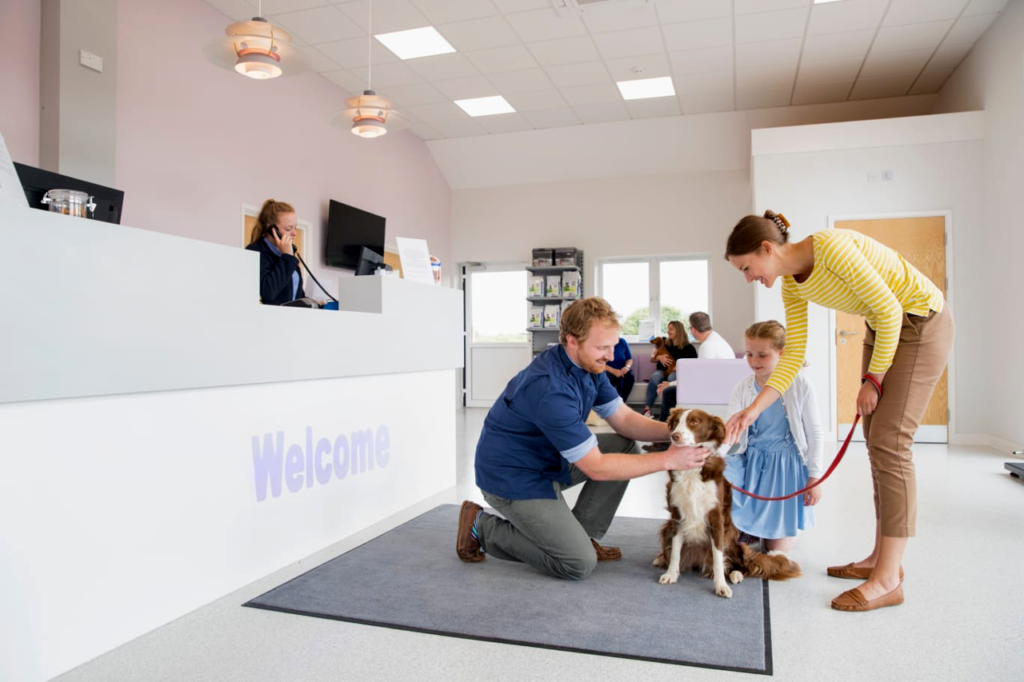
The Benefits of Pet-Assisted Therapy: Improving Mental and Physical Health for Patients
In recent years, a heartwarming and non-traditional approach to improving mental and physical health has gained momentum: pet-assisted therapy. This innovative therapeutic intervention employs specially trained animals, such as dogs, cats, and even horses, to interact with patients, offering emotional support and alleviating various health issues. This article delves into the myriad benefits of pet-assisted therapy and how it can significantly enhance the well-being of patients.
Read More: The Impact of Pet Therapy
Understanding Pet-Assisted Therapy

Pet-assisted therapy, also known as animal-assisted therapy, is a form of treatment that uses animals as integral parts of the healing process for individuals with physical and mental health conditions. The animals involved in this therapy undergo careful selection and training to ensure their suitability for therapeutic purposes.
The Emotional Connection
One of the primary advantages of pet-assisted therapy is the emotional bond that patients form with their animal companions. This unique connection is particularly impactful for individuals dealing with depression, anxiety, or loneliness, as it provides a sense of companionship and unconditional love. In times of despair, these therapy animals become sources of solace and emotional stability.
Physical Health Benefits
Beyond their emotional benefits, therapy animals also have a tangible impact on a patient’s physical health. The presence of animals has been shown to lower blood pressure, reduce heart rate, and even alleviate pain in some cases. This is especially crucial for patients battling chronic illnesses, where pain and discomfort are constant companions.
Reducing Stress and Anxiety
Therapy animals have a special talent for reducing stress and anxiety levels. Spending time with these animals can trigger the release of oxytocin, often referred to as the “love hormone.” This hormone is associated with bonding, relaxation, and stress reduction, helping patients better manage their stress and improving their overall mental health.
Enhancing Mood and Well-being
Interactions with therapy animals can release endorphins, the body’s natural mood lifters. This surge in mood-enhancing chemicals can lead to increased feelings of well-being and happiness. For individuals grappling with conditions like depression or post-traumatic stress disorder (PTSD), these therapy animals become invaluable allies in their mental health journey.
Pet-Assisted Therapy in Clinical Settings
The scope of pet-assisted therapy is not limited to home environments; it is widely embraced in clinical settings such as hospitals and rehabilitation centers. Trained therapy animals visit patients, providing comfort and companionship during their recovery. The presence of these animals can significantly expedite the healing process and boost the overall morale of patients.
Pet-Assisted Therapy in Long-Term Care Facilities

Long-term care facilities have also recognized the benefits of pet-assisted therapy. Residents in nursing homes and assisted living communities often experience feelings of isolation and longing for companionship. Therapy animals offer these residents a sense of connection, improving their overall quality of life and reducing the emotional toll of living away from their families.
Benefits for Children and Adolescents
Pet-assisted therapy can be a game-changer for children and adolescents struggling with behavioral and emotional challenges. It helps them build trust, reduce aggression, and develop empathy. These positive effects have a profound impact on their psychological well-being and can lead to more successful and fulfilling lives.
Training and Certification for Therapy Animals
The effectiveness of pet-assisted therapy is reliant on the training and certification of therapy animals. These animals undergo rigorous training to ensure they are well-suited for their roles. They are exposed to various situations and individuals to ensure they remain calm and non-threatening, even in high-stress environments. This rigorous training process ensures that therapy animals are prepared for the diverse range of patients they will encounter.
The Role of Different Animals
While dogs are the most commonly used therapy animals, other creatures like cats, rabbits, and even miniature horses can play vital roles in pet-assisted therapy. The choice of animal may depend on the patient’s preferences and specific therapeutic needs. Different animals offer various benefits and can cater to a wide range of patient requirements.
Safety Considerations
Safety is paramount when it comes to pet-assisted therapy. Ensuring that therapy animals are well-trained, vaccinated, and regularly assessed is essential to prevent any potential health risks to patients. Stringent safety measures are in place to guarantee the well-being of both patients and animals.
Potential Challenges
It’s crucial to recognize that pet-assisted therapy may not be suitable for everyone. Some patients may have allergies or phobias related to animals, making this therapy less appropriate for them. In such cases, alternative therapeutic approaches should be considered to ensure patient comfort and safety.
Success Stories

The transformative power of pet-assisted therapy is exemplified by numerous success stories. These heartwarming narratives highlight the profound impact therapy animals have on patients’ lives. Patients often report substantial improvements in their mental and physical health, and these personal accounts continue to inspire the growth of this therapeutic approach.
Conclusion
Pet-assisted therapy is an extraordinary and effective approach to improving the mental and physical health of patients. The emotional connection, physical health benefits, and overall well-being enhancements it provides make it a valuable addition to traditional healthcare practices. As more research and anecdotal evidence support the effectiveness of this therapy, it is likely to become an even more prominent and integral part of patient care.
Read more: How Pet Therapy Heals What Ails Us
Frequently Asked Questions (FAQs)
- How do therapy animals benefit patients in clinical settings? Therapy animals in clinical settings provide emotional support and companionship, which can expedite the healing process and improve the patient’s overall well-being.
- Are there any specific requirements for an animal to become a therapy animal? Yes, therapy animals undergo training and certification to ensure they are well-suited for their roles and can safely interact with patients.
- Can therapy animals work with children and adolescents? Absolutely, therapy animals can be particularly beneficial for children and adolescents facing behavioral and emotional challenges, helping them build trust and reduce aggression.
- Are there any potential risks associated with pet-assisted therapy? While pet-assisted therapy is generally safe, some patients may have allergies or phobias related to animals, making this therapy less appropriate for them.
- What are some of the heartwarming success stories of pet-assisted therapy? There are many inspiring success stories where therapy animals have made a profound impact on patient’s lives, significantly improving their mental and physical health.








One Comment